#Roman empire
Text
You wake up tomorrow morning and find yourself inhabiting the body of Roman Emperor Marcus Aurelius (who reigned 161 to 180 AD). After quietly ordering the assassination of your narcissistic and cruel son Commodus (staging his death to appear as a natural illness) and naming a more qualified heir…
Totally natural if you want to address multiple issues, but your political capital is scarce. Which is your top priority?
122 notes
·
View notes
Photo
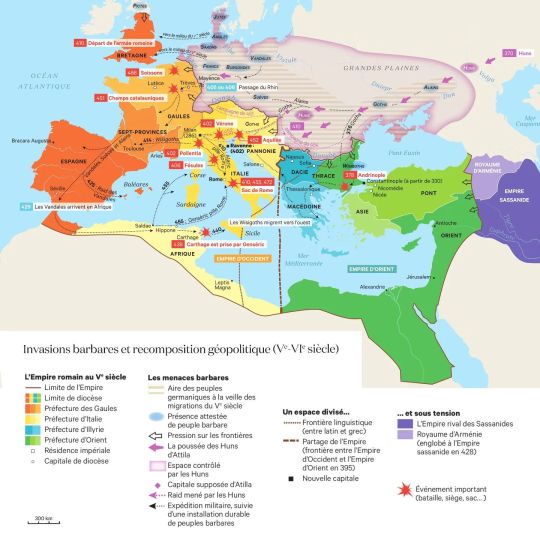
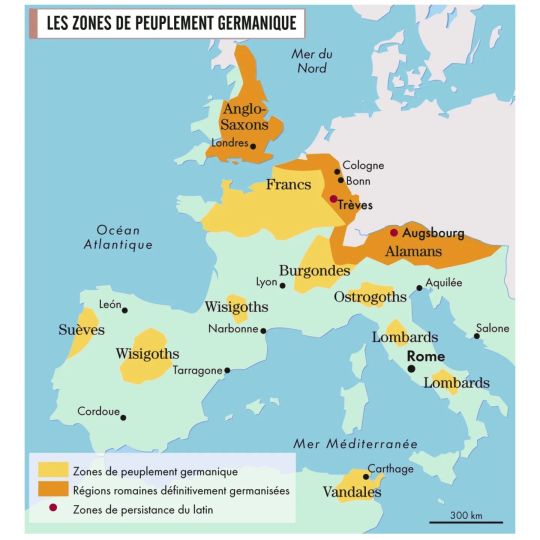
Barbarians and Romans: the geopolitical recomposition of the 5th century.
1 : « Atlas historique mondial », Les Arènes, 2019
2 : « Atlas de Rome et des barbares », Autrement 2018
via cartesdhistoire
The presence of barbarians could not be resolved by force alone, so the emperors chose to address the issue politically. Treaties that settled barbarians in specific regions helped to stop the violence and costly devastation from a fiscal standpoint. Additionally, the barbarians strengthened the imperial army against other barbarians, usurpers, and anti-tax revolts. There was also hope to integrate them into the empire.
During the 5th century, the status of federates recognized by the emperor allowed local elites to cooperate with the barbarians while remaining loyal to Rome. Political reasons (such as the legitimacy of the barbarians' presence granted by the emperor), acculturation (acceptance of Christianity, Latin culture, and many Roman social traditions), and long-standing relations with the Romans facilitated the acceptance of barbarian power, as they often belonged to the same late Roman world.
For example, the Salian Franks entered the Empire around 290 as dedicates in Batavia and settled in Toxandrie in 342. In 451, they allied with Rome against Attila, then against the Burgundians and the Visigoths. At the death of Childeric, Remigius of Reims considered Clovis a natural partner. Similarly, the Goths signed their first treaty with Rome in 332 and regularly helped Rome from 413 to 460 against other barbarians (Alans, Hasdingi Vandals, Suevi), usurpers (Jovinus), Bagaudae revolts (454), and invaders (Attila). They had been in the Empire for a century when they were recognized as independent. The Burgundians signed two treaties as federates around 413 and 442. After 458, their leaders defined themselves as masters of the Gallic militia for more than half a century. The Ostrogoths, on their part, came to Italy at the request of Constantinople.
83 notes
·
View notes
Text
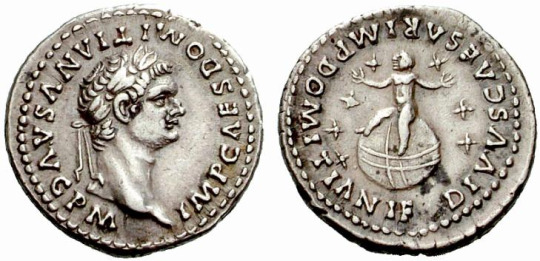
Denarius, minted between 88 and 96 CE by the Roman emperor Domitian (r. 81-96 CE), marking the deification of his infant son. On the obverse, the laureate head of Domitian himself. On the reverse, Domitian's son, hailed as DIVUS CAESAR IMPERATOR DOMITIANI F(ILIUS), is depicted as a young Jupiter. sitting on a globe and reaching out toward the seven stars that make up Ursa Major. Photo credit: Classical Numismatic Group, Inc. http://www.cngcoins.com
#classics#tagamemnon#history#ancient history#Ancient Rome#Roman Empire#Roman history#Domitian#Flavians#art#art history#ancient art#Roman art#Ancient Roman art#Roman Imperial art#coins#ancient coins#Roman coins#Ancient Roman coins#denarius#numismatics#ancient numismatics#Roman numismatics
52 notes
·
View notes
Text
In honour of the start of The Aeneid subscription – here's a painting of Aeneas and Dido from Louvre!
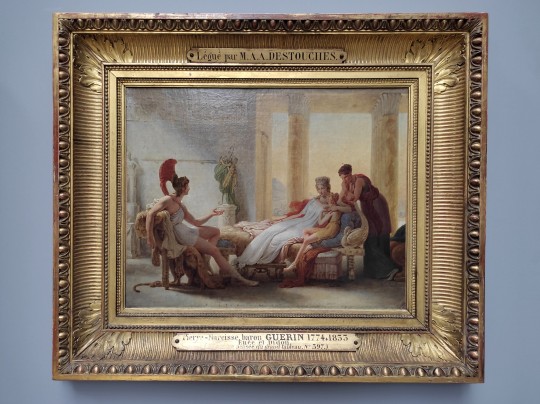
Notice the slay fit with the ultra short toga
#aeneas#the aeneid#vergil#virgil#publius vergilius maro#classics memes#tagamemnon#classical studies#latin#ancient Rome#historical art#art#louvre#dido#roman mythology#roman empire
45 notes
·
View notes
Text

Ancient Roman Gold Necklace with Cornelian Polyhedral Beads
Imperial, 2nd- 3rd century A.D.
#Ancient Roman Gold Necklace with Cornelian Polyhedral Beads#Imperial#2nd- 3rd century A.D.#jewelry#ancient jewelry#ancient artifacts#archeology#archeolgst#history#history news#ancient history#ancient culture#ancient civilizations#ancient rome#roman history#roman empire#roman art#ancient art
29 notes
·
View notes
Text
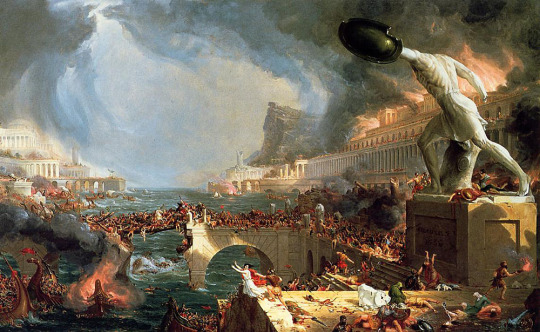
"The course of Empire: Destruction" (1836), by Thomas Cole
#the course of empire#destruction#empire#course#thomas cole#rome#ancient rome#roman republic#roman empire#painting#canvas#oil painting#art#vintage#culture#art history#history#dark academia#museums#dark academia aesthetic#dark academic#fine art#classic academia#classical art#gothic style#gothic art#gothic#goth#dark academia moodboard#dark academia vibes
26 notes
·
View notes
Text

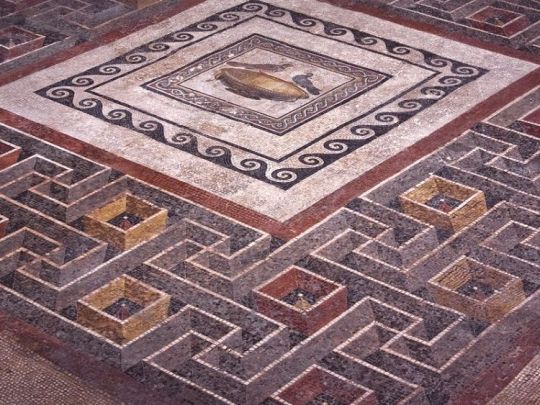
An impressive mosaic from Domus Romana, a luxurious villa in Malta that was inhabited from the first century BC to the second century AD.
#ancient rome#roman empire#ancient art#ancient history#ancient culture#ancient civilizations#floor mosaic#roman mosaic#one of the things i need#domus romana#mosaic
25 notes
·
View notes
Text

I mean, I don't want to sound stupid, but I always assumed that the Ancient Romans were mammals
26K notes
·
View notes
Text
”Men think about the Roman Empire” “What’s the female version of the Roman Empire” SHUT UPPPPP. SHUT THE FUCK UPPPPPP. AS A WOMAN I LOVE THE ROMAN EMPIRE. AS A WOMAN I LOVE ANCIENT HISTORY AND BATTLES AND POLITICAL INSTABILITY. THE “GIRL VERSION OF THE ROMAN EMPIRE” IS THE ROMAN EMPIRE. IM GOING TO STAB YOU 23 TIMES
#why do we have to gender history ffs I hate it here#sorry just had to get it out my system#roman empire#history#classics#tagamemnon#ancient history#ancient rome
21K notes
·
View notes
Text
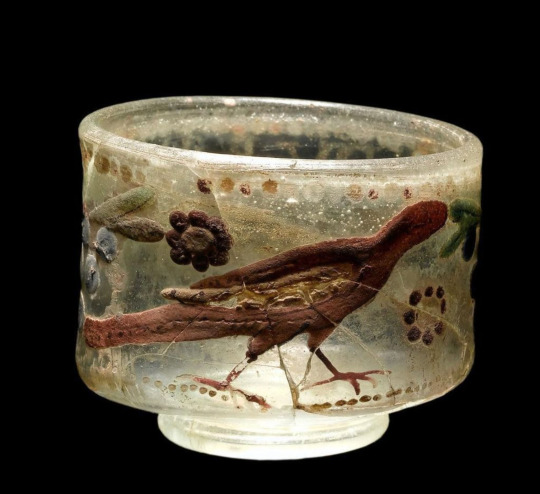
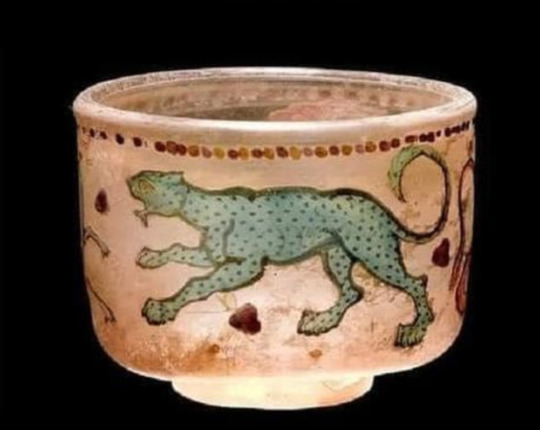
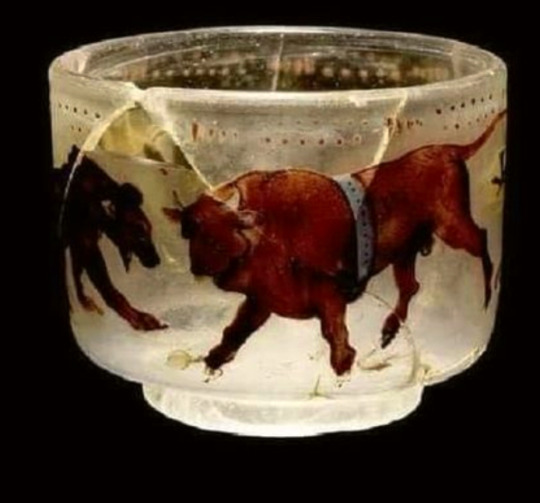
Roman Glass Cups (3rd Century AD)
3K notes
·
View notes
Text
Happy 2,068th to when we should totally just stab Caesar!! Grab a knife with your bestie!



#assassin's creed#ides of march#julius ceaser#julius caesar#aya of alexandria#assassin’s creed origins#ac origins#tumblr holidays#roman history#roman empire#we should totally just stab caesar#rome#ancient rome#caesar#brutus#et tu brute#beware the ides of march#mean girls#shakespeare#Shakespeare Julius Caesar#meme#funny memes#memes#tumblr memes#assassin’s creed
3K notes
·
View notes
Text
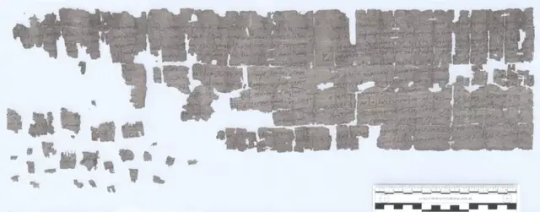
Archaeologists Find Roman Centurions' Letters in Ancient Animal Cemetery in Egypt
Discovered among the graves of hundreds of cats, dogs and monkeys, the correspondence was likely written by centurions in the first century.
An ancient pet cemetery in Egypt is becoming a gold mine for rare Roman history. Alongside its carefully constructed graves of more than 200 beloved cats, dogs and monkeys, archaeologists have now found letters handwritten 1,900 years ago by Roman centurions stationed nearby.
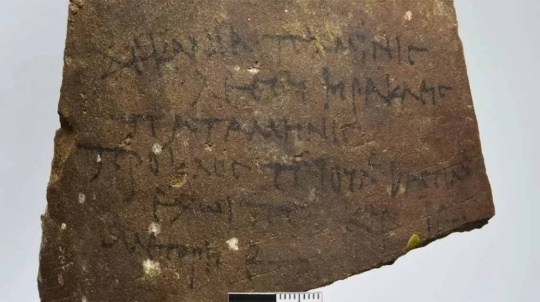
Though Rome controlled Egypt for centuries—from the year 30 to the mid-600s—few Roman sites still exist in the region, lead researcher Marta Osypińska, an archaeologist at Poland’s University of Wrocław’s Institute of Archaeology, tells Science in Poland’s Ewelina Krajczyńska. The burial ground, which dates back to the first and second centuries, is located in Berenike, a Red Sea port in southern Egypt built by Roman Emperor Tiberius.
Osypińska’s team first discovered the cemetery in 2011, and they’ve been slowly excavating it since then. Among the burials of cats, dogs and exotic monkeys, researchers have found ceramics, Roman coins and now, several letters written on papyrus by military officers who commanded units of Roman legions.
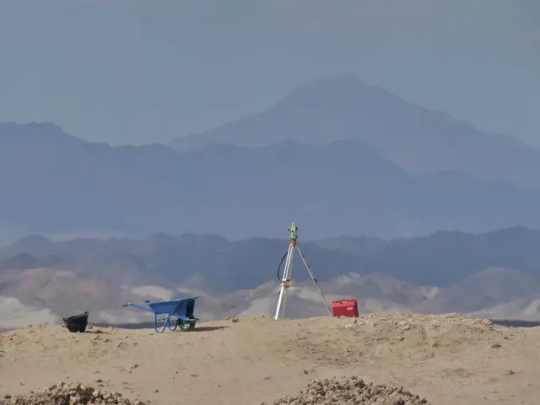
According to a statement by the University of Wrocław, these “priceless sources of knowledge about the ancient inhabitants of Berenike” are from the era of Emperor Nero, a cruel Roman ruler of the mid-first century. During his reign, Berenike was a hub of cross-continental trade, through which goods from India, Arabia and East Africa flowed, Osypińska says in the statement. The port was home to regional merchants, Roman higher-ups in charge of trading and—as historians have long suspected but never before proven—a unit of the Roman military.
The newly-found correspondence contains several names of presumed Roman centurions: Haosus, Lucinius and Petronius. In one letter, Petronius asks Lucinius, who is stationed in Berenike, about the prices of some exclusive goods, Osypińska tells Science in Poland. Petronius writes that he’s sending money via “dromedarius,” a unit of Roman soldiers traveling on camels, and tells Lucinius to provide the soldiers with veal and tentpoles.
Researchers believe ancient Romans likely kept the papyri in a nearby office which was later destroyed, accidentally distributing its contents over the pet cemetery, as McClatchy’s Aspen Pflughoeft writes. Excavators found the papyrus in rolled fragments, which they showed to Rodney Asta, an expert of ancient inscriptions, who pieced together a page approximately one and a half feet long and a foot wide, Osypińska tells Science in Poland. Among the animal graves, researchers have found countless ostracons—pieces of pottery etched with writing—but the papyri are the first paper texts to be found on-site.
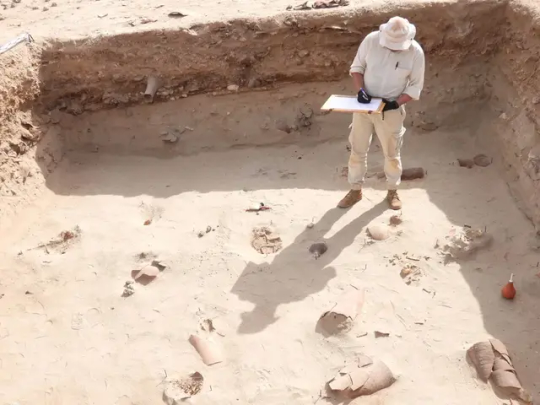

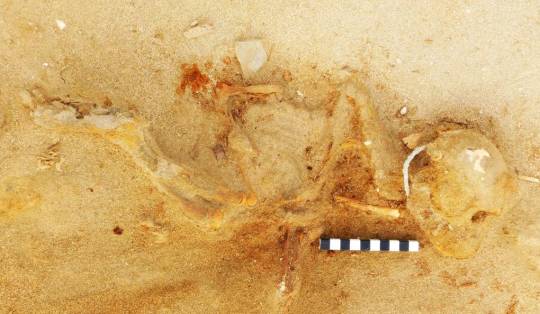
The letters are the latest evidence of advanced Roman trade to be found in the cemetery, per the statement: The skeletons of several buried monkeys, recently identified as macaques native to India, show that Romans imported non-utilitarian animals across oceans. These primates, along with long-haired cats and miniature dogs, were “elite pets,” and many were buried with toys, ceramics or other animal companions.
As Osypińska notes in the statement, it may seem difficult to reconcile the image of commanders of an ancient foreign legion with such animals, which were “treated as family members.”
“However, our findings unequivocally show that the military elite surrounded themselves with elite pets and led an exclusive lifestyle,” she adds.
By Sonja Anderson.

#Archaeologists Find Roman Centurions' Letters in Ancient Animal Cemetery in Egypt#Berenike#ancient pet cemetery in Egypt#Roman Emperor Tiberius#ancient artifacts#archeology#archeolgst#history#history news#ancient history#ancient culture#ancient civilizations#roman history#roman empire
20 notes
·
View notes
Text

i collaged this two together btw thought some you might like, happy march 15 tumblr!
#ides of march#beware the ides of march#julius caesar#julius ceaser#marcus brutus#march fifteen#march 15#roman empire#roman republic#julius caesar assassination#brutus#caesar
3K notes
·
View notes
Text

2 silver cups, part of the so-called Boscoreale treasure, buried by the eruption of Mt. Vesuvius.
#roman empire#ancient rome#pompeii#ancient history#ancient culture#ancient art#roman art#ancient roman art
6K notes
·
View notes
Text


they’re my roman empire if you care
5K notes
·
View notes
